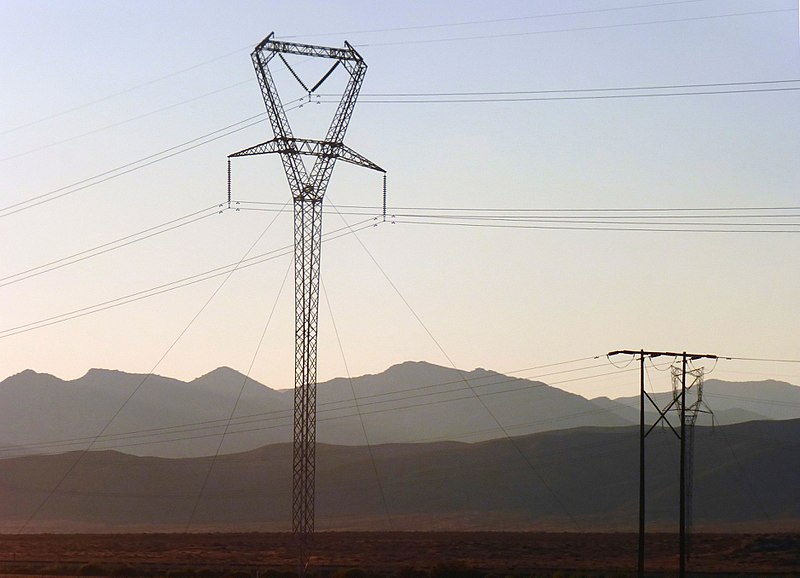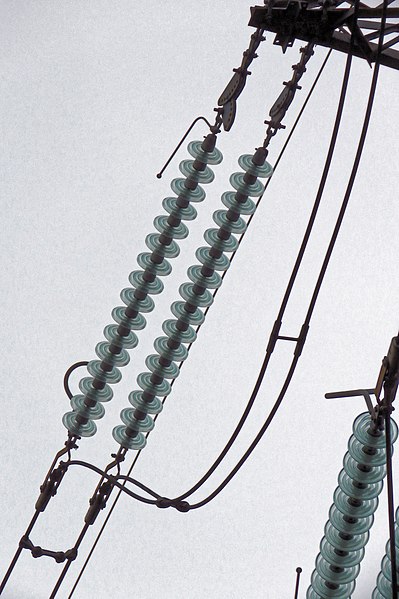Transmission Towers
Transmission towers come in a vast array of shapes and sizes. They are easily identified by their external connective tissues, a kind of wire commonly known as an electric cable. Transmission towers cannot survive disconnected from their broader network, and may hold anywhere from two to six or more cables.
Larger transmission towers are known as pylons, and typically carry their cables between sites where electricity is harvested to facilities known as substations. Pylons are typically lattice-bodied, though in recent years larger pole-bodied specimens have been sighted. Smaller transmission towers, or utility poles, are almost always pole-bodied, and carry their cables between substations and a wide array of other facilities, such as residence outposts or commercial complexes. Utility poles are typically 30-40' tall, and are relatively similar in size regardless of habitat. However, while most pylons are 50-200' tall, some species may grow much taller!
The two major families of pylon are suspension and anchor pylons. Suspension varieties are more delicate, and prefer to stand in very straight lines, tolerating only the gentles bends in their connective tissue. They hold their cables in parallel formations as a rule, and when one becomes unbalanced, they tend to die off in long cascades. Anchor varieties are more resistant to this contagion, and may be found sporadically in lines of suspension towers, preventing catastrophic mass die-offs. Anchor pylons are bulkier than suspension pylons and more capable of supporting uneven cable configurations. Some anchor species, known as branches, carry their connective tissue not just between individuals but also to the ground. Some researchers speculate that this subterranean tissue connects pylons to facilities that would be otherwise unreachable. Transposition towers, another anchor subspecies, are specially evolved to connect pylons strings with different wire configurations which would be otherwise incompatible.
Anatomy of a Pylon
Archetypical Pylon Shapes
- Delta: a V-shaped pylon, sometimes with a crossbar across the top forming a triangle on its point. A Y-shaped variant features a large single leg at its base.
- Portal: two seperate legs attached by a horizontal cross arm forming an H-shape.
- Single Level: a T-shaped pylon, typically carrying three cables on each side. May be more common near airports due to their short stature.
- Danube: commonly found in central Europe, Danube pylons feature an upper cross arm carrying one cable and a lower cross arm carrying two on each side.
- Tri-level: three cross arms each carry a single cable on each side. In the UK, the middle arm may be wider than the rest.
Skeletal Structure
- Legs: the base of the pylon's structure, holding its cage above the ground. Number and position of legs are highly variable.
- Thorax: mature pylons may grow large enough that they develop a sort of scaffolding between the legs and below the cage.
- Cage: the segment of the pylon that supports the cross arms.
- Cross arms: the horizontal limbs extending from the cage. A pylon's cross arms are where connective tissue is held, and vary in configuration and number according to the density and complexity of its tissue matrix.
- Peak: the portion of the pylon above the cage. If the pylon possesses an earth anchor wire, it will typically be held here.
Organs
- Strain Insulator: a pylon will have at least one strain insulator for each of its held cables. This organ supports the weight of the cable while protecting the pylon itself from the potent electrical energy it carries. They are most often composed of glass, porcelein, or fiberglass. In anchor pylons, they will often be oriented horizontally, while other species tend to be oriented vertically.
- Earth Anchor Cable: Anchor pylons sometimes use these non-electric cables to support themselves near a large gap between towers or to help support asymmetrical loads.
- Stockbridge Dampener: a short length of weighted cable clamped parallel to the direction of the connective tissue. This organ helps the pylon deal with excess motion from strong winds.
- Arcing Horn: found on the end of insulators, these horns protect the pylon and its connective tissue from deadly voltage surges, often caused by lightning or other disturbances to the tissue network.
- Antenna: it's not uncommon to spot a pylon bearing an antenna, despite little known function in these organisms. Many researchers speculate that these appendages are not in fact part of the pylon at all, but a sort of parasitic subspecies of radio tower.

